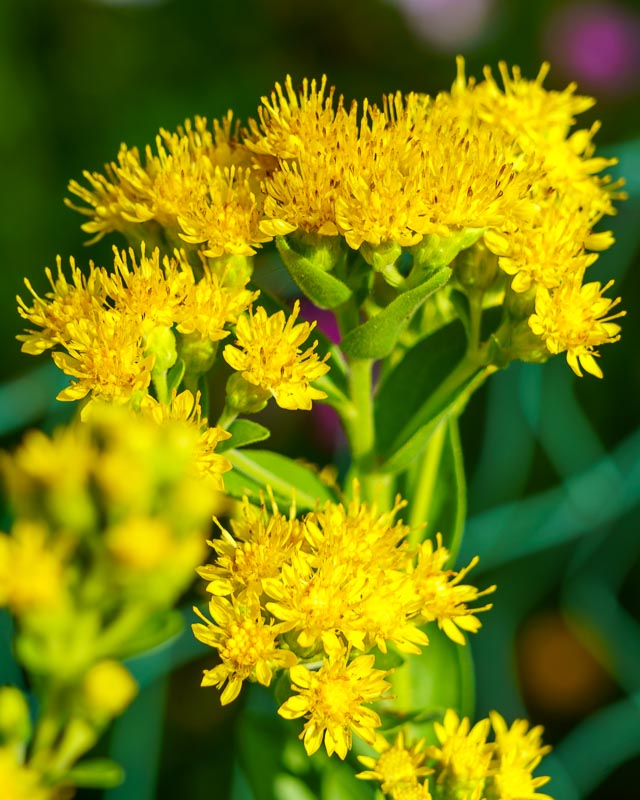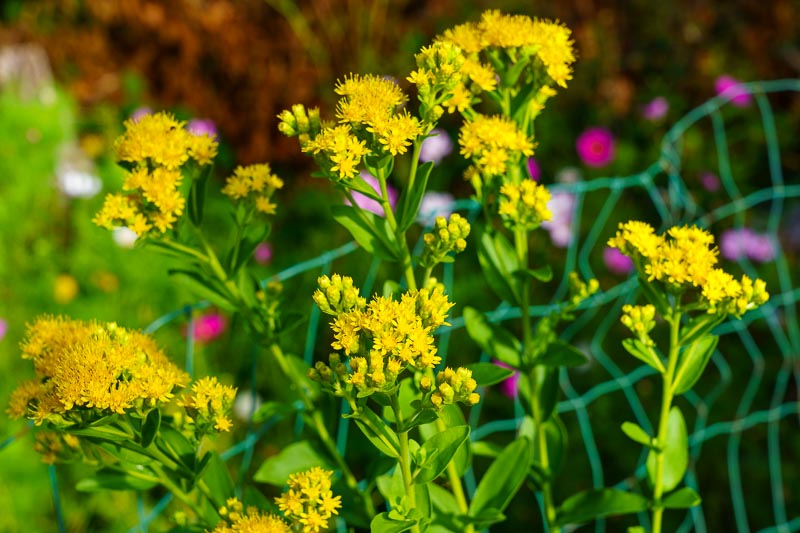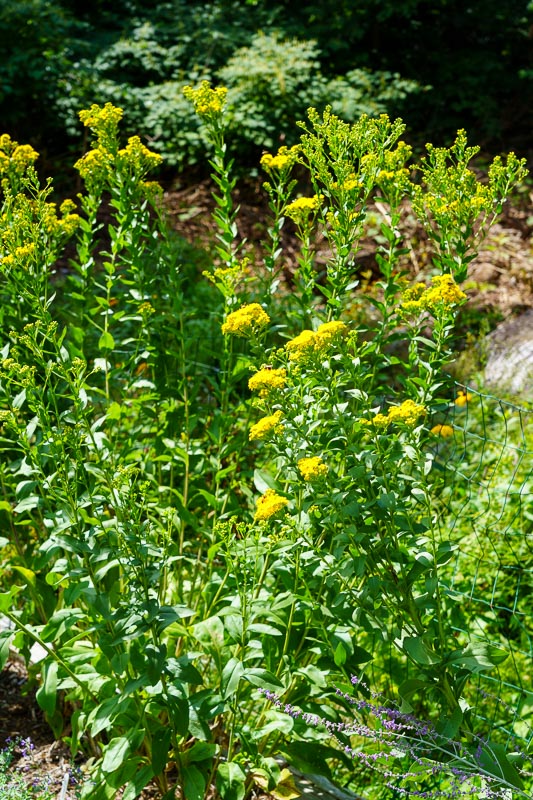Stiff Goldenrod
Common Name:
Stiff Goldenrod
Botanical Name:
Solidago rigida
Mature Size:
36 - 60” tall, 18 - 30” wide
Sun Exposure:
Full Sun
Soil Type:
Average to infertile, well-drained
Soil pH:
Acidic, neutral
Bloom Time:
Summer through fall
Flower Color:
Yellow
Care:
In general, goldenrod species require very little maintenance and will grow well in any sunny location with average or even poor soil. They rarely have pest or disease problems and can tolerate a variety of growing conditions. You might have to stake the taller varieties so the plants don't flop and bend.
Soil:
Loamy Soil, Clay Soil
Water:
Water new goldenrod plants weekly to maintain damp, but not soggy soil. Mature goldenrod plants are drought tolerant and rarely need supplemental watering except when rainfall is scarce.
Temperature and Humidity:
The hardiness range varies a bit depending on the species, but most goldenrods thrive in USDA cold hardiness zones 2 to 8.
Fertilizer:
Fertilizing goldenrod is typically not necessary because the plants do well in lean soil conditions. However, if the soil quality is poor or you wish to give your plants a boost to increase their height, add a layer of compost in the spring.
Too much fertilization often leads to floppy green growth and reduces flower production.
Pruning:
Pruning stem tips early in the season can result in goldenrod plants becoming fuller and bushier and lead to more flowers later in the season. Deadheading spent flower heads can prolong the bloom season well into fall. Removing the flower heads before they go to seed can prevent rampant self-seeding. At the end of the season or in late winter, cut the plant stalks back to a few inches above ground level.
Overwintering:
Goldenrod is a hardy plant up to USDA cold hardiness zone 2 and does not need protection unless grown in containers, in which case it is recommended to winterize the containers to insulate the roots against freezing temperatures.
In the garden, the stems can be cut down to a few inches above ground level after frost kills the foliage. Removing the stems, including seed heads, will reduce self-seeding in the garden.


